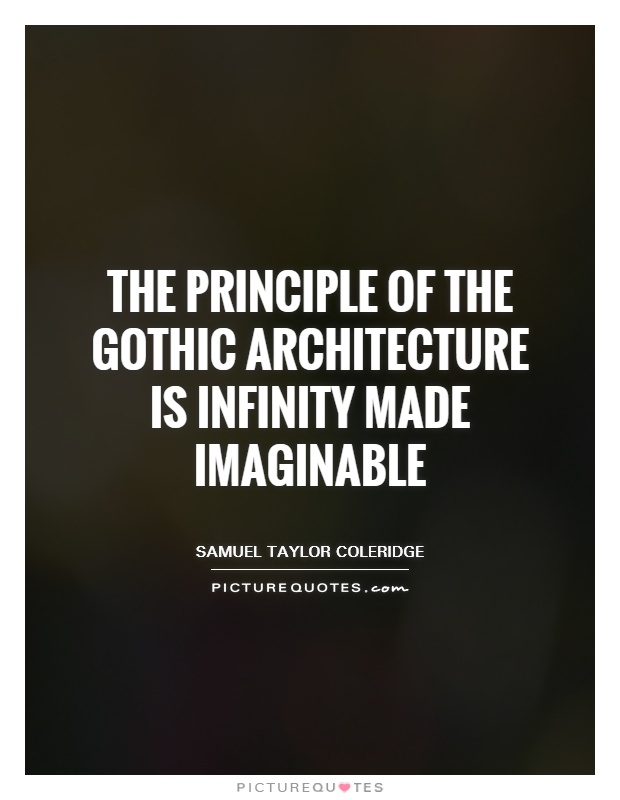The principle of the Gothic architecture is infinity made imaginable

The principle of the Gothic architecture is infinity made imaginable
Samuel Taylor Coleridge, a prominent English poet and philosopher, was known for his deep appreciation of Gothic architecture. He believed that the principle of Gothic architecture was the embodiment of infinity made imaginable. This concept reflects Coleridge's fascination with the transcendent and the infinite, which he often explored in his poetry and philosophical writings.Gothic architecture, with its soaring spires, intricate stone carvings, and vast, light-filled interiors, was seen by Coleridge as a physical manifestation of the infinite. The vertical lines and pointed arches of Gothic buildings seemed to reach up towards the heavens, suggesting a connection to the divine and the eternal. Coleridge saw in these structures a reflection of the human desire to transcend the limitations of the material world and reach towards something greater.
For Coleridge, the principle of Gothic architecture was not just about the physical form of the buildings themselves, but also about the ideas and emotions they inspired. The sense of awe and wonder that Gothic cathedrals evoked in those who beheld them was, for Coleridge, a glimpse of the infinite. The play of light and shadow, the intricate patterns of stone and glass, all served to create an atmosphere of mystery and grandeur that spoke to the deepest parts of the human soul.












 Friendship Quotes
Friendship Quotes Love Quotes
Love Quotes Life Quotes
Life Quotes Funny Quotes
Funny Quotes Motivational Quotes
Motivational Quotes Inspirational Quotes
Inspirational Quotes